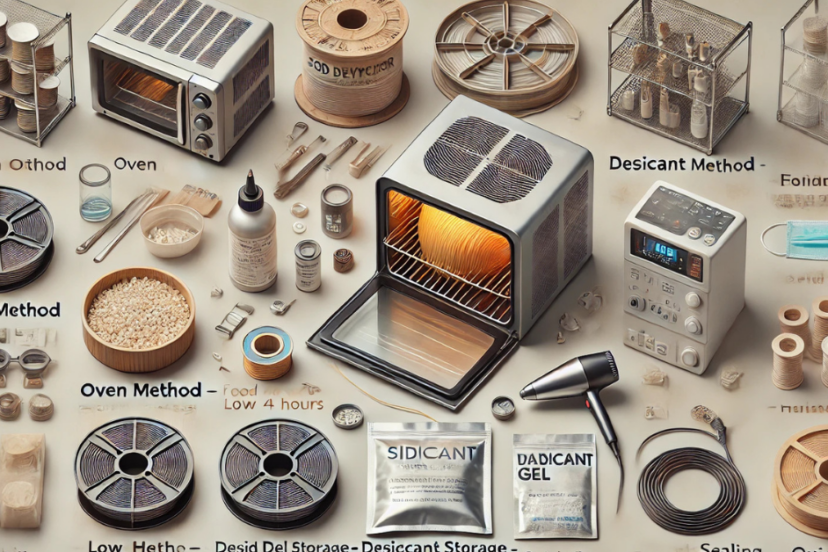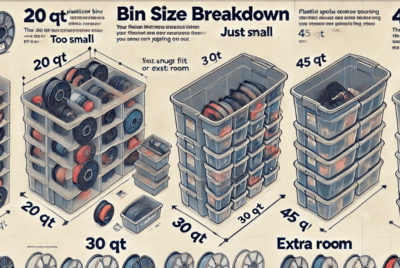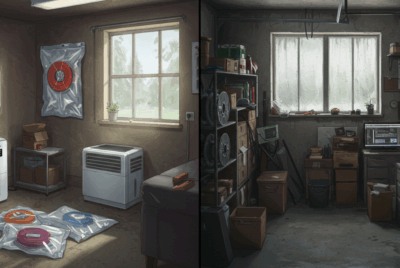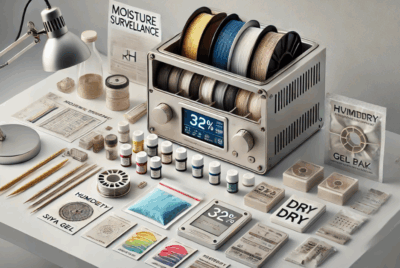How do I dry filament without a dryer?
If you don’t have a filament dryer, you can still dry your filament using some common household items and methods. Here are a few ways to dry filament without a specialized dryer:
1. Use an Oven
- Method: Preheat your oven to a low temperature (around 45°C to 50°C or 113°F to 122°F for PLA). Place your filament spool on a baking tray or in a heat-resistant container, ensuring the filament doesn’t touch the tray or walls of the oven.
- Steps:
- Set your oven to the recommended temperature.
- Place the spool in the oven and leave it for 4–6 hours (longer for more moisture-heavy filaments like Nylon).
- Make sure to keep the door slightly ajar to allow moisture to escape if your oven has humidity buildup.
- Caution: Always monitor the filament to avoid overheating, as high temperatures can cause PLA or other filaments to warp or melt.
2. Use a Dehydrator (Food Dehydrator)
- Method: If you have a food dehydrator, you can use it to dry your filament. Set the temperature to around 45°C to 50°C and let the filament dry for several hours.
- Steps:
- Place the filament spool inside the dehydrator.
- Set the temperature between 45°C and 50°C.
- Dry for about 4-8 hours depending on the filament and moisture level.
- Advantages: Food dehydrators are designed to evenly circulate heat and air, making them an effective option for filament drying.
3. Use a Desiccant Box
- Method: If you don’t need to dry filament urgently, you can store the filament in a box with desiccant packets, such as silica gel. This method slowly absorbs moisture over time.
- Steps:
- Place the filament spool in an airtight container or box.
- Add desiccant packets (silica gel or clay desiccants) to absorb the moisture.
- Leave the container for several days to ensure the filament is fully dried.
- Advantages: This is a low-maintenance, passive way to dry filament, but it takes longer than active methods like heating.
4. Use a Hairdryer (for Small Amounts of Filament)
- Method: If you have a small amount of filament that needs drying, you can use a hairdryer with a low heat setting and blow warm air over the filament.
- Steps:
- Set the hairdryer to a low heat setting.
- Hold it a few inches from the filament spool, moving it gently to dry the filament evenly.
- Caution: Avoid using too much heat or staying in one place for too long, as this can cause the filament to overheat or melt.
5. Use a Vacuum Sealed Bag
- Method: While not an active drying process, vacuum-sealed bags can help prevent moisture from affecting your filament by keeping it in a moisture-free environment.
- Steps:
- Place the filament spool in a vacuum-seal bag.
- Add desiccants to the bag before sealing it to absorb any moisture.
- Store the vacuum-sealed bag in a cool, dry place.
- Advantages: This method works best for storing filament in a moisture-free environment, especially in high-humidity areas.
6. Store Filament in a Dry Area
- Method: If you don’t need to actively dry filament but want to keep it from absorbing moisture, store it in a cool, dry, and dark area, away from direct sunlight and humidity.
- Steps:
- Keep the filament in its original packaging or an airtight container.
- Add silica gel or other desiccants to absorb ambient moisture.
- Advantages: This is a preventative measure to keep filament dry in the long term.
These methods can be effective alternatives for drying filament if you don’t have a dedicated filament dryer. Just be cautious with heat to avoid damaging the filament, and always monitor the drying process.




